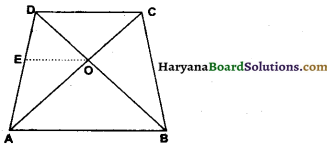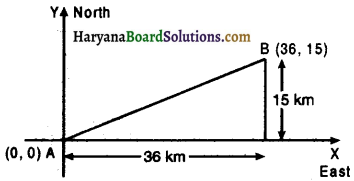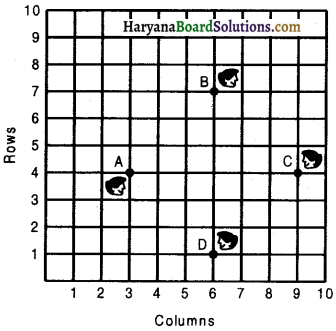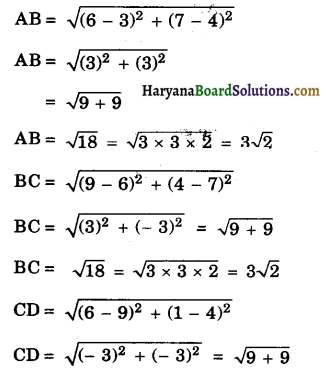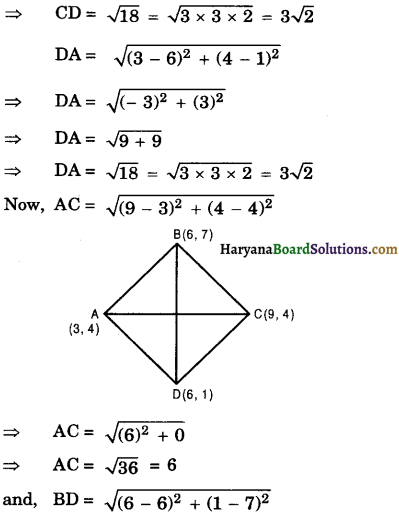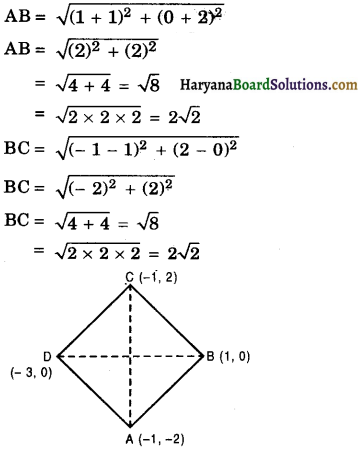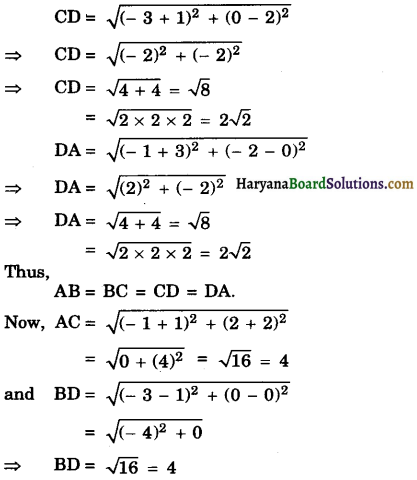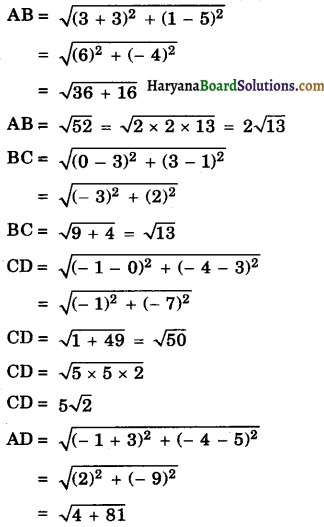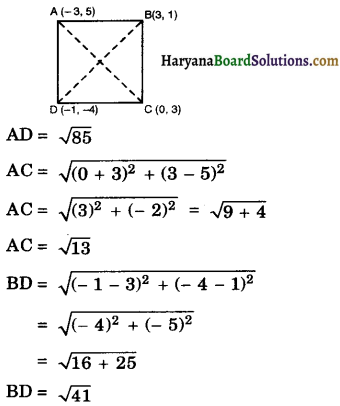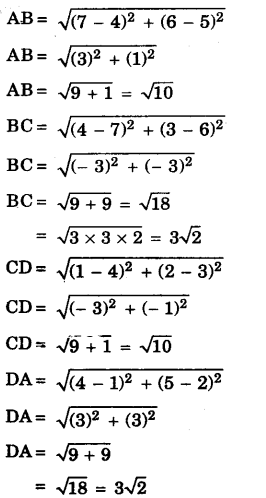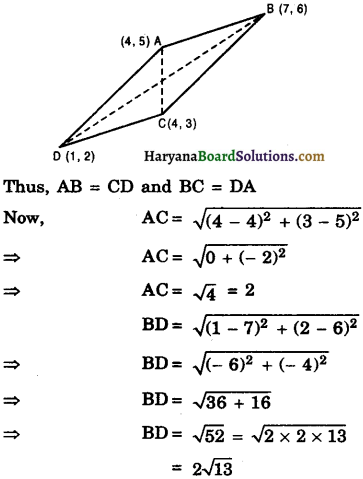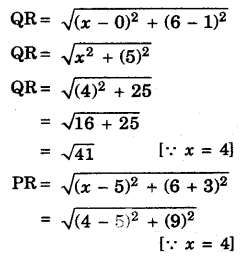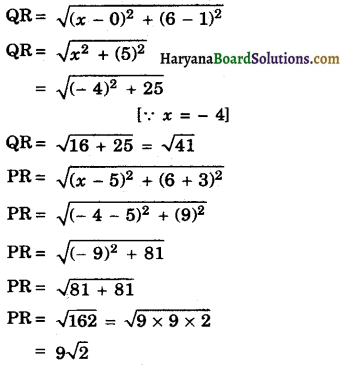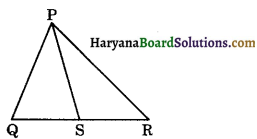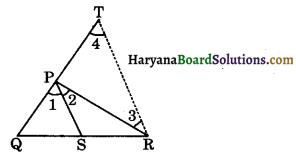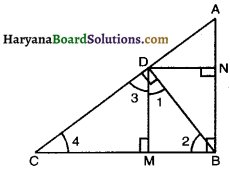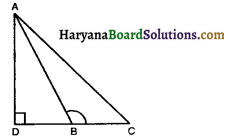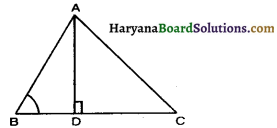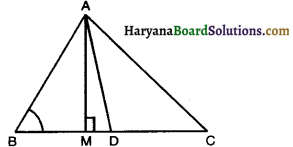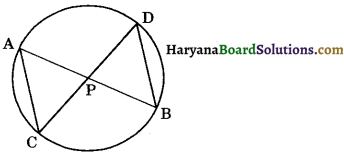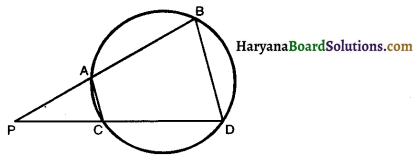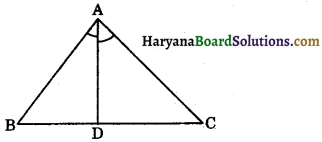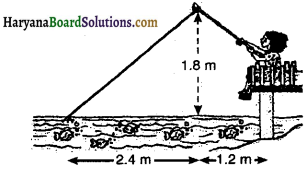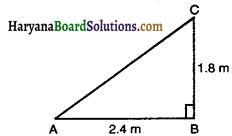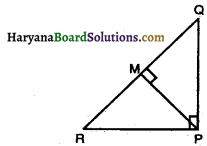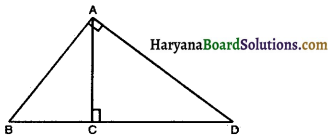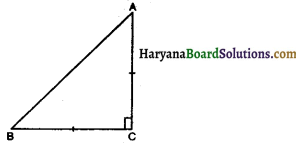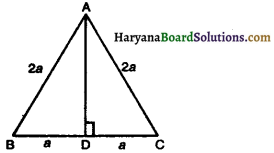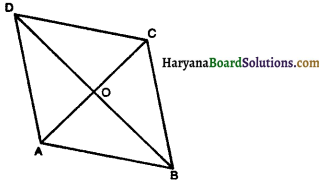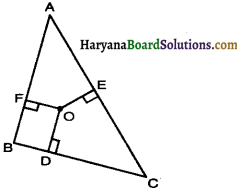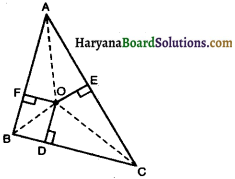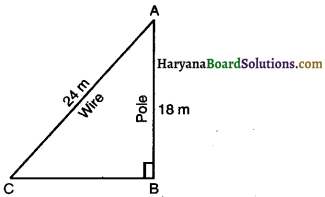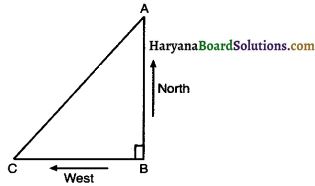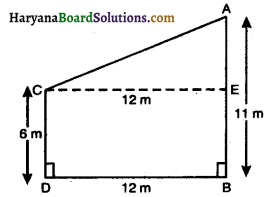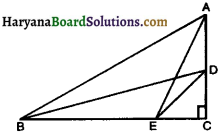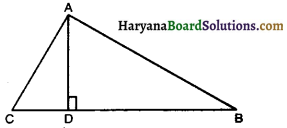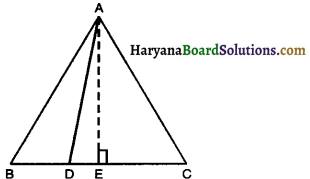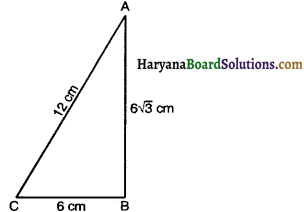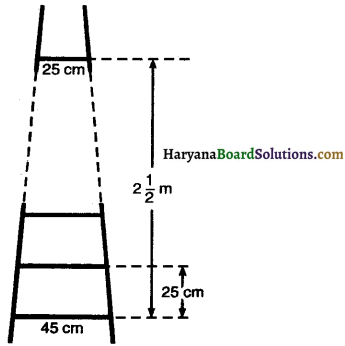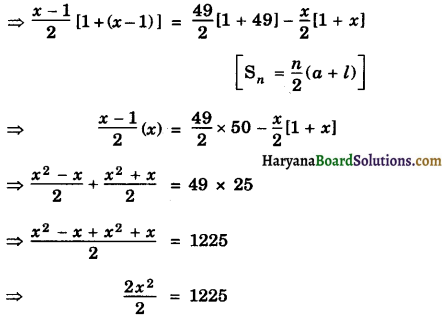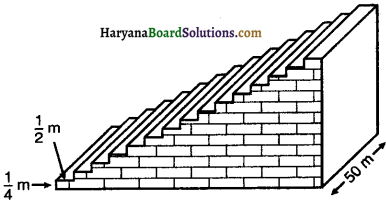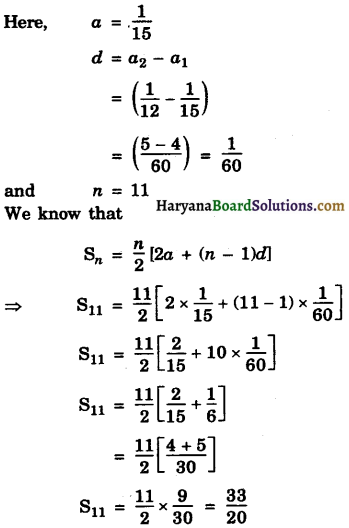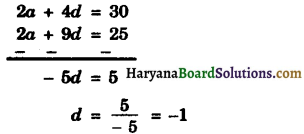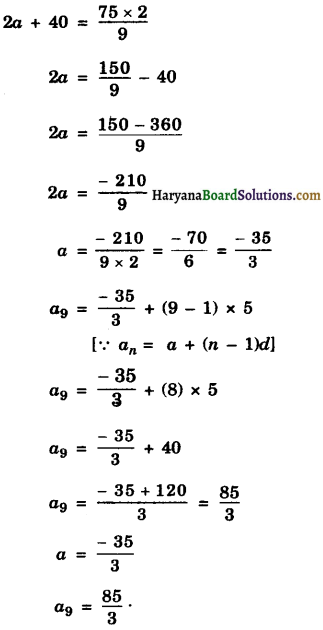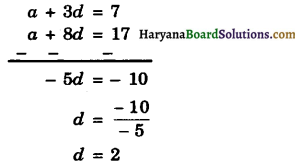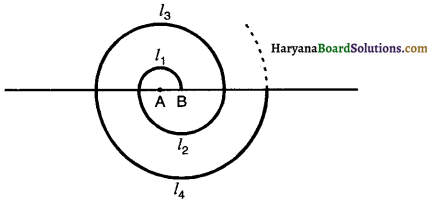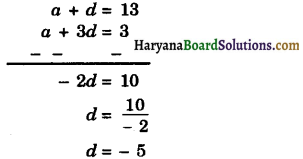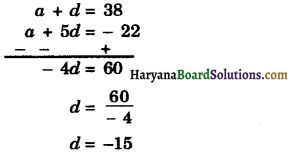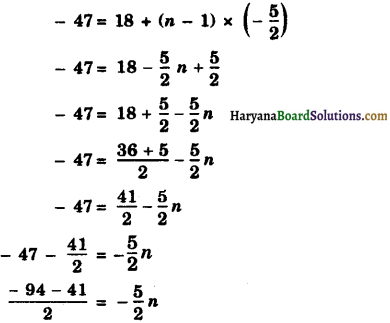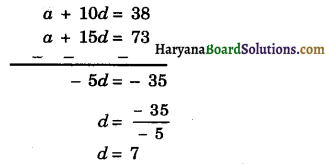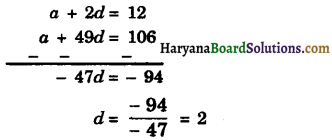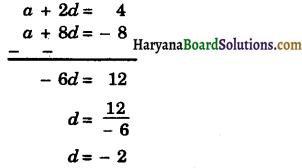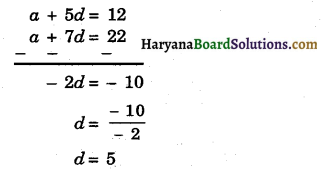Haryana State Board HBSE 10th Class Social Science Important Questions History Chapter 3 The Making of a Global World Important Questions and Answers.
Haryana Board 10th Class Social Science Important Questions History Chapter 3 The Making of a Global World
Multiple Choice Questions
Important Questions On The Making of a Global World HBSE 10th Class Question 1.
The routes which knitted together, vast regions of Asia and linked Asia with Europe and Northern Africa:
(a) Silk routes
(b) Royal routes
(c) Golden quadrilateral
(d) None of these.
Answer:
(a) Silk routes
Important Question On The Making of a Global World HBSE 10th Class Question 2.
From which country did noodles travel to the west?
(a) India
(b) Pakistan
(c) China
(d) Sri Lanka.
Answer:
(c) China
The Making of a Global World Map Based Questions HBSE 10th Class Question 3.
What were the most powerful weapons used by the Spanish conquerors to colonise America?
(a) Chemical agents
(b) Traditional arms and ammunitions
(c) Germs
(d) All of these.
Answer:
(c) Germs

Important Questions Of The Making of a Global World HBSE 10th Class Question 4.
Which of the following continent’s original inhabitants had no immunity against diseases due to their long isolation?
(a) America
(b) Africa
(c) Asia
(d) Europe.
Answer:
(a) America
Important Questions In The Making of a Global World HBSE 10th Class Question 5.
Which of the following diseases was spread in America by the Spanish soldiers?
(a) Plague
(b) Small pox
(c) Malaria
(d) Polio.
Answer:
(b) Small pox
Important Questions For The Making of a Global World HBSE 10th Class Question 6.
Which of the following laws allowed the British Government to restrict the import of com?
(a) Com Laws
(b) Corn Act
(c) Food Act
(d) Import Laws.
Answer:
(a) Com Laws
Important Question The Making of a Global World HBSE 10th Class Question 7.
Which of the following technology enabled the transportation of perishable foods over long distances?
(a) Refrigerated ships
(b) Introduction of lighter wagons
(c) Faster railways
(d) None of these.
Answer:
(a) Refrigerated ships

Question 8.
In which of the following continents did the Rinderpest spread?
(a) Europe
(b) Asia
(c) Africa
(d) America.
Answer:
(c) Africa
Question 9.
Who was a well known pioneer of mass production?
(a) Abraham Lincoln
(b) Henry Ford
(c) Michele Johnes
(d) All of these.
Answer:
(b) Henry Ford
Question 10.
The time period of the Great Depression was:
(a) 1929-1930s
(b) 1930-1940s
(c) 1940-1950s
(d) 1950-1960s.
Answer:
(a) 1929-1930s
Question 11.
The Second World War was fought between:
(a) The Axis powers and the Central powers
(b) The Axis Powers and the Allies
(c) The Central powers and the Allies
(d) None of these.
Answer:
(b) The Axis Powers and the Allies
Question 12.
Which countries organised a group called G-77 ?
(a) Developing Countries
(b) Developed Countries
(c) Undeveloped Countries
(d) All of these.
Answer:
(a) Developing Countries
Fill in the blanks
1. Human societies have become steadily more ………….
Answer:
interlinked.
2. The long distance spread of ………….. germs may be trace as far back as the seventh century CE.
Answer:
disease-carrying.
3. European conquest was not just a result of superior ………….
Answer:
firepower.
4. Europe now emerged as the centre of ………….
Answer:
world trade.
5. Trade …………. and markets expanded in the late nineteenth century.
Answer:
flourished.

6. ……………. arrived in Africa in the late
Answer:
Rinderpest, 1880s.
7. Indian traders and …………. also followed European ………….. into Africa.
Answer:
moneylenders, colonisers.
8. The …………… and the World Bank were designed to meet the ………….. needs of the industrial countries.
Answer:
IMF, financial.
Very Short Answer Type Questions
Question 1.
What is globalisation?
Answer:
Movement of people, goods and services across the nations has been termed as globalisation.
Question 2.
Name the elements that helped to create the globalised world.
AnsweR:
(i) Trade
(ii) Migration of people from one place to another in search of work,
(iii) Capital
(iv) Global exchange of goods.
Question 3.
Who interlinked human societies more steadily from ancient times?
Answer:
Since ancient times, travellers, traders, priests and pilgrims travelled to interlink human societies more steadily.
Question 4.
Name the common foods which were not known to our ancestors until about five centuries ago.
Answer:
Potatoes, soya, groundnuts, maize, tomatoes, chillies, sweet potatoes, etc.
Question 5.
Where was spaghetti bom?
Answer:
It is believed that noodles travelled to the west from China to become spaghetti.
Question 6.
What does the word ‘America’ describe?
Answer:
The word America describes the collective group of North America, South America and the Caribbean islands.
Question 7.
In which century did the European sailors find a sea route to Asia?
Answer:
In the sixteenth century.
Question 8.
Which was the fabled city of gold?
Answer:
The El Dorado.

Question 9.
What was the impact of germs on the original inhabitants of America?
Answer:
The germs killed and decimated entire communities due to a lack of immunity.
Question 10.
In which continent, poverty and hunger was common until the nineteenth century?
Answer:
Europe.
Question 11.
Which countries were among the world’s richest countries until the eighteenth century?
Answer:
India and China.
Question 12.
Give the three types of flows within the international economic exchanges.
Answer:
- Flow of trade
- Flow of labour
- Flow of capital.
Question 13.
To which continents did the European people flee, by the end of the nineteenth century?
Answer:
America and Australia.
Question 14.
What steps were taken by the British government to improve agriculture in West Punjab?
Answer:
(i) To improve agriculture, a network of irrigation canals was built.
(ii) Canal colonies were established by peasants who came from other parts of Punjab.
Question 15.
What were canal colonies?
Answer:
The semi-desert waste areas of Punjab, after being irrigated by the new canals, began to be called as canal colonies. They were created to grow wheat and cotton for export.
Question 16.
Why did most of the borders of African countries run straight?
Answer:
Most of the borders of African countries ran straight because Africa was divided on paper by the rival European powers in the conference hall in Berlin.
Question 17.
What was Rinderpest?
Answer:
Rinderpest was a cattle plague. It was a fast-spreading disease among cattle.
Question 18.
Explain the term ‘Indentured Labour’.
Answer:
A bonded labourer, under contract to work for an employer for a specific period, is known as an indentured labourer.

Question 19.
Name any four states of India from where the indentured labour migrated.
Answer:
- Uttar Pradesh
- Bihar
- Tamil Nadu
- Madhya Pradesh.
Question 20.
Where did indentured labour migrate from India?
Answer:
The Indian indentured labour migrated to the Caribbean islands (mainly Trinidad, Guyana and Surinam), Mauritius and Fiji.
Question 21.
What was ‘Hosay’?
Answer:
In Trinidad, the annual ‘Muharram’ procession was transformed into a riotous carnival called ‘Hosay’. It was one of the ways to preserve the culture of indentured labourers.
Question 22.
Where was the ‘Chutney music’ popular?
Answer:
The ‘Chutney music was popular in the American states of Trinidad and Guyana.
Question 23.
Who was V. S. Naipaul?
Answer:
He was the Nobel Prize-winning writer, whose forefathers migrated as indentured workers.
Question 24.
What is common among V.S. Naipaul, Shivnarain Chandrapaul and Ramnaresh Sarwan?
Answer:
They all have descended from indentured labour migrants from India.

Question 25.
Explain the term Trade Surplus’.
Answer:
The trade surplus is a situation under which the value of exports is more than imports.
Question 26.
Name the countries comprising the Allied powers in the First World War.
Answer:
Britain, France and Russia (Later joined by the US.)
Question 27.
Name the countries comprising the Central powers.
Answer:
Germany, Austria-Hungary and Ottoman Turkey.
Question 28.
Who was the biggest international creditor after the First World War?
Answer:
The United States of America.
Question 29.
Write the name of the world’s first mass-produced car.
Answer:
T-model Ford.
Question 30.
When did the great economic depression begin?
Answer:
In 1929.
Question 31.
Name the countries comprising the Axis powers in the Second World War.
Answer:
Germany, Japan and Italy.

Question 32.
Name the countries comprising the Allied powers in the Second World War.
Answer:
Britain, France, the Soviet Union and the US.
Question 33.
What is the full form of IMF?
Answer:
International Monetary Fund.
Question 34.
Name the two institutions which were established under the Bretton Woods Agreement.
Answer:
- International Monetary Fund (IMF).
- International Bank for Reconstruction and Development (popularly known as World Bank.)
Question 35.
In which year did the IMF and the World Bank commence financial operations?
Answer:
In 1947.
Question 36.
What is the difference between the International Monetary System and the Bretton Woods System?
Answer:
The International Monetary System is the system linking national currencies and the monetary system, whereas the Bretton Woods System was based on fixed exchange rates.
Question 37.
What is NIEO?
Answer:
New International Economic Order (NIEO) is demanded by G-77, which meant a system, that would give the developing countries control over their natural resources, more developmental assistance, fair prices for raw materials, and better access for their manufactured goods in the markets of developed countries.
Question 38.
What do you mean by G-77?
Answer:
G-77 was a group of 77 developing countries which did not benefit from the fast growth, which the western economies experienced in the 1950s.

Question 39.
Give the two types of exchange rates.
Answer:
(i) Fixed exchange rate
(ii) Floating exchange rate.
Question 40.
Which person is called a Dissenter?
Answer:
A dissenter is a person who refuses to accept established beliefs and practices.
Question 41.
Name any two primary agricultural products and one primary mineral product.
Answer:
(i) Agricultural products: Wheat, Cotton
(ii) Mineral product: Coal
Question 42.
What has been described as a ‘new system of slavery?
Answer:
Nineteenth-century indenture has been described as a ‘new system of slavery.
Short Answer Type Questions – I
Question 1.
What were the silk routes ?
Answer:
These were the routes that knitted together vast regions of Asia and linked Asia with Europe and northern Africa. The name ‘silk routes’ points to the importance of Westbound Chinese silk cargoes along this route. These routes are known to have existed since before the
Christian Era and thrived almost till the fifteenth century.
Question 2.
“The pre-modern world shrank greatly in the sixteenth century”. Explain.
Answer:
The pre-modem world shrank greatly in the sixteenth century because :
(i) European sailors found a sea route to Asia and also successfully crossed the western ocean to reach America.
(ii) The Portuguese and Spanish conquest and colonisation of America was decisively underway by the mid-sixteenth century.

Question 3.
(i) When and where did the Irish potato famine take place? What was its impact?
(ii) “Till the 1870s, meat was an expensive luxury beyond the reach of the European poor”. Give reasons.
Answer:
(i) The Irish potato famine took place between 1845 to 1849 iir Ireland. The potato was the main food of poor Irish peasants. When a disease destroyed the potato crop in the mid-1840s, hundreds of thousands died of starvation in Ireland and double the number, emigrated in search of work.
(ii) Till the 1870s, animals were shipped live from America to Europe and slaughtered when they arrived there. But, live animals took up a lot of ship space. Many also died in the voyage, fell ill, lost weight or became unfit to eat. Thus, meat was an expensive luxury, beyond the reach of the European poor.
Question 4.
(i) what were Com Laws? Why were these laws abolished?
(ii) How was the food problem of Britain solved after the scrapping of the Com Laws?
Answer:
(i) Under pressure from landed groups, the British government restricted the import of com. These laws were popularly known as the Com Laws. Unhappy with high food prices, industrialists and urban dwellers forced the abolition of the Com Laws.
(ii) After the Com Laws were scrapped, food could be imported to Britain. As food prices fell, consumption in Britain rose. Faster industrial growth in Britain also led to higher incomes, and therefore more food imports.
Question 5.
Why did thousands of people flee from Europe to America in the nineteenth century?
Answer:
Thousands of people fled from Europe to America because of the following reasons:
- Until the nineteenth century, poverty and hunger were common in Europe.
- Cities were crowded and deadly diseases were widespread.
- Religious conflicts were common and religious dissenters were persecuted.
Therefore, people migrated from Europe to America.
Question 6.
Write in brief about the transport of gold by the Europeans from Transvaal gold mines.
Answer:
After the discovery of gold in Witwatersrand, Europeans rushed to the region, despite their fear of disease and death and the difficulties of the journey. Crossing the Wilge river was the quickest method of travel to the gold fields of Transvaal. By the 1890s, South Africa contributed over 20 per cent of the world’s gold production.

Question 7.
What was Rinderpest? How did it affect the lives of Africans?
Answer:
Rinderpest was a devastating cattle disease which arrived in Africa in the late 1880s. It was carried by infected cattle imported from British Asia, to feed the Italian soldiers invading Eritrea in East Africa. Rinderpest killed 90 per cent of the cattle. The loss of cattle destroyed African livelihoods. Planters, mine owners and colonial governments now successfully monopolised what scarce cattle resources remained, to strengthen their power and to force Africans into the labour market. Control over the scarce resource of cattle enabled European colonisers to conquer and subdue Africa.
Question 8.
Why was the indentured labour of the nineteenth century described as “New System of Slavery” ? How were the indentured workers exploited by the recruiting agents?
Answer:
Indentured labour of the nineteenth century had been described as a ‘New System of Slavery1 because, on arrival at the plantations, labourers found that living and working conditions were very harsh, and there were few legal rights. Many workers escaped into the wilds though, and if caught, faced severe punishment. Agents tempted the prospective migrants by providing false information about final destinations, modes of travel, the nature of the work and living and working conditions. Often, migrants were not even told that they were to embark on a long sea voyage. Sometimes, agents even forcibly abducted less willing migrants.
Question 9.
Mention any four factors responsible for indentured labour.
Answer:
Four factors responsible for indentured labour were:
- Decline of cottage industry in India.
- Increase in land rents.
- Loss of cattle due to Rinderpest in Africa.
- Unemployment and poverty.
Question 10.
‘India played a crucial role in the late nineteenth-century world economy. Explain.
Answer:
India was a British colony. Britain had a ‘trade surplus with India. Britain used this surplus to balance its trade deficits with other countries, that is, with countries from which Britain was importing more than it was selling to. Thus, we can say that, by helping Britain in balancing its deficit, India played an important role in the world economy in the late nineteenth century.

Question 11.
(i) What was the main aim of the post-war international economic system? Which institutions were established to achieve this aim?
(ii) What were the limitations of the IMF and the World Bank?
Answer:
(i) The main aim of the post-war international economic system was to preserve economic stability and full employment in the industrial world. To achieve this aim, the International Monetary Fund and the World Bank were formed through the Bretton Woods Conference.
(ii) (a) The IMF and the World Bank were not equipped to cope with the challenges of poverty and lack of development in the former colonies.
(b) They were controlled by the United States of America, as it had veto power.
Question 12.
Why did the countries of G-77 demand a new international economic order?
Answer:
The countries of G-77 demanded a new international economic order because of the following reasons :
(i) The developing countries wanted a system which provided them loan on their resources but did not exploit those resources.
Social Science
(ii) They wanted fairer prices for raw materials and better access for their manufactured goods in the markets of developed countries.
Question 13.
Why did the inflow of fine Indian cotton begin to decline in Britain?
Answer:
Earlier, fine cotton, produced in India was exported to Europe. With industrialisation, British cotton manufacturing started to expand, and the industrialists pressurised the Government to stop cotton imports and protect local industries. As a result, the inflow of fine Indian cotton started to decline.
Long Answer Type Questions
Question 1.
How did human societies become inter-connected in the pre-modem era?
Answer:
- All through history, human societies have become steadily more interlinked.
- Since ancient times, travellers, traders, priests and pilgrims travelled long distances for knowledge, opportunity and spiritual fulfilment, or to escape persecution. ,
- They carried goods, money, skills, ideas, values, inventions, and even, germs and diseases.
- As early as 3000 BCE, an active coastal trade linked the Indus valley civilisation with present-day West Asia.
- For more than a millennia, cowries used as a form of currency from the Maldives found their way to China and East Africa.
Question 2.
‘By 1890, a global agricultural economy had taken shape.’ Support this statement by giving examples.
Answer:
By 1890, a global agricultural economy had taken shape. There were many changes in labour movement patterns, capital flows, ecologies and technology. Food no longer came from a nearby village or town, but from thousands of miles away. It was not grown by a peasant tilling his own land, but by an agricultural worker, who was now working on a large farm, that only a generation ago, had most likely, been a forest.

It was transported by railway and by ships, which were increasingly manned in these decades by low-paid workers from Southern Europe, Asia, Africa and the Caribbean. The world trade is estimated to have multiplied 25 to 40 times, between 1820 and 1914. Nearly 60 per cent of this trade comprised ‘Primary products’, that is, agricultural products such as wheat and cotton, and minerals such as coal.
Question 3.
What were the advantages of the invention of refrigerated ships?
Answer:
The advantages of the invention of refrigerated ships were the following:
- Now, animals were transported as frozen meat. This reduced shipping costs and lowered meat prices in Europe.
- The poor in Europe could now consume a more varied diet.
- To the earlier monotony of bread and potatoes many, though not all, could now add meat, butter and eggs, in their diet.
- Better living conditions promoted social peace within the country and support for imperialism abroad.
Question 4.
What were the main sources of attraction for Europeans to come to Africa in the late nineteenth century?
Answer:
- Historically, Africa had abundant land and a relatively small population. Europeans were attracted to Africa due to its vast resources of land and minerals.
- They came to Africa, hoping to establish plantations and mines to produce crops and minerals for export to Europe.
- Europeans divided different regions of Africa among themselves.
Question 5.
“The journey of Stanley was inspired by the imperialistic aims”. Explain the statement.
Answer:
Sir Henry Morton Stanley was a journalist and an explorer. He was sent by the New York Herald in 1871 to find Livingston, a missionary and explorer, who had been in Africa for several years. Like other American and European explorers of that time, Stanley went with arms, and mobilised local hunters, warriors and labourers to help him. He fought with local tribes, investigated African terrains, and mapped different regions. These explorations helped the conquest of Africa. These type of geographical explorations were not driven by an innocent search for scientific information. They were directly linked to imperial projects.
Question 6.
What methods were used by European employers to recruit and retain African labourers?
Answer:
- Heavy taxes were imposed, which could be paid only by working for wages on plantations and mines.
- Inheritance laws were changed, so that peasants were displaced from land; only one member of a family was allowed to inherit land, others were pushed into the labour market.
- Mine workers were also enclosed in compounds, and not allowed to move freely.
Question 7.
What was the impact of industrialisation in Britain on Indian economy?
Answer:
(i) With industrialisation, British cotton manufacturers began to expand and industrialists pressurised the government to restrict cotton imports and protect local industries. Tariffs were imposed on cloth imports to Britain. As a result, the inflow of fine Indian cotton began to decline.

(ii) From the early nineteenth century, British manufacturers also began to search the overseas markets for their cloths. The British machines made textile products which started giving a tough competition to the Indian textile industry at home. So, there was a decline in the share of cotton textiles, from some 30 per cent around 1800, to 15 per cent by 1815. By the 1870s, the proportion had dropped to below 3 per cent.
Question 8.
The First World War was a modern industrial war. Explain.
Answer:
The First World War saw the use of machine guns, tanks, aircrafts, chemical weapons, etc. on a massive scale. These all were developing products of modem large- scale industries. To fight the war, millions of soldiers had to be recruited from around the world and moved to the frontlines on large ships and trains. The scale of death and destruction 9 million dead and 20 million injured was unthinkable before the industrial age without the use of industrial arms.
Question 9.
Explain the exchange rates.
Answer:
Exchange rates link national currencies for the purpose of International trade.
There are two types of exchange rates:
(i) Fixed exchange rate, and (ii) Flexible or floating exchange rate.
(i) Fixed Exchange rate : When exchange rates are fixed and governments intervene to prevent sudden fluctuation in them, they are known as fixed exchange rate.
(ii) Flexible or Floating Exchange rates : When exchange rates are determined by demand and supply forces of the open market without any interference by government, they are known as flexible or floating exchange rates.
Long Answer Type Question
Question 1.
How did the Silk Routes link the world?
Answer:
- The silk routes are a good example of vibrant pre-modem trade and cultural links between distant parts of the world.
- The silk route was used by the Chinese traders to export silk to other countries.
- These routes were used by traders to trade goods and exchange culture from one country to another.
- Trade and cultural exchange always went hand in hand. Early Christian missionaries, almost certainly travelled through this route to Asia, as did early Muslim preachers, a few centuries later.
- These routes were also used to spread religions. Buddhism emerged from eastern India and spread in several directions through intersecting points on the silk routes.
Question 2.
How did the US economy resume its strong growth in the 1920s?
Answer:
(i) One important feature of the US economy of the 1920s was mass production. The move toward mass production had begun in the late nineteenth century, but in the 1920s, it became a characteristic feature of industrial production in the US.
(ii) A well-known pioneer of mass production was the car manufacturer- Henry Ford. He adapted the assembly line of a Chicago slaughterhouse to his new car plant in Detroit (USA). He realised, that the ‘assembly line’ method would allow a faster and cheaper way of producing vehicles.

(iii) Ford’s industrial practices soon spread in the US. They were also widely copied in Europe in the 1920s. Due to higher wages, more workers could now afford to purchase durable consumer goods, such as cars. Car production in the US rose from 2 million in 1919, to more than 5 million in the year 1929. Similarly, there was a spurt in the purchase of refrigerators, washing machines, radios, gramophone players, all through a system of “hire purchase’, that means on credit, repaid in weekly or monthly instalments.
(iv) The demand for refrigerators, washing machines, etc. was also fuelled by a boom in house construction and home ownership, financed once again by loans.
(v) The housing and consumer boom, of the 1920s created the basis of prosperity in the US. Large investments in housing and household goods seemed to create a cycle of higher employment and incomes, rising consumption demand, more investment, and yet more employment and incomes.
(vi) In 1923, the US resumed exporting capital to the rest of the world and became the largest overseas lender.
Question 3.
What do you know about the Great Depression? Discuss its effects also.
Answer:
An economic depression means when a country records an immense increase in production, the purchasing power of the masses records a steep fall and the face value of the currency decreases. This state of economic depression set in the United States of America (USA) in 1929 and engulfed the whole world. That’s why it is known as the Great Depression.
Effects of the Great Depression:
(i) The US was the industrial country, most severely affected by the depression. With the fall in prices and the prospect of a depression, US banks had also slashed domestic lending and called back loans.
(ii) Farmers could not sell their harvests, households were ruined and businesses collapsed.
(iii) Faced with falling incomes, many households in the US could not repay what they had borrowed and were forced to give up their homes, cars and other consumer durables.
(iv) The consumerist prosperity of the 1920s now disappeared in a puff of dust.
(v) As unemployment soared, people trudged long distances, looking for any work they could find.
(vi) Ultimately, the US banking system itself collapsed. Unable to recover investments, collect loans and repay depositors, thousands of banks went bankrupt and were forced to close. The numbers were phenomenal by 1933, over 4,000 banks had closed, and between 1929 and 1932, about 110,000 companies had collapsed.
Question 4.
What were the factors responsible for the end of the Bretton Woods System ?
Answer:
The factors responsible for the end of the Bretton Woods system were as follows:
(i) The Decline of US Currency:
After 1960s, the US was no longer a dominant economic power, as it had been, for more than two decades. The US dollar now no longer commanded confidence as the world’s principal currency. The dollar could not maintain its value in relation to gold.
(ii) Rise of Western Commercial Banks:
From the mid 1970s, the international financial system also changed in important ways. Earlier, developing countries could turn to international institutions for loans and development assistance. But now, they were forced to borrow from Western Commercial banks and private lending institutions. This led to periodic debt crisis in the developing world, and lower incomes and increased poverty, especially in Africa and Latin America.

(iii) Problem of Unemployment:
The industrial world was also hit by unemployment, that began rising from the mid-1970s, and remained high until the early 1990s. From the late 1970s, MNCs also began to shift production operations to low-wage Asian countries.
(iv) Low Cost Structure in China:
The Chinese economy came out as a new super power, due to low cost structure. Wages were relatively low in countries like China. In this way, they became attractive destinations for investment by foreign MNCs, competing to capture the world markets.
(v) Relocation of Industry:
The relocation of industry to low-wage countries stimulated world trade and capital flows. In the last two decades, the world’s economic geography had been transformed by countries such as India, China and Brazil which had undergone rapid economic transformation.
Map Work
Question 1.
Mark and locate any three 19th Century British colonies on the given outline map of Africa.
Answer:
Africa-Political

Question 2.
On an outline map of Africa locate and label the two colonies of Spain, Germany and France at the end of the 19th century :
Answer:
(a) Spanish Colonies:
(i) Spanish Sahara
(ii) Spanish Morocco.
(b) German Colonies:
(i) German South West Africa
(ii) German East Africa.
(c) French Colonies:
(i) Algeria
(ii) Middle Congo.


Question 3.
An outline map of Africa show the following:
(i) British Dominion (19th Century)
(ii) Two Portuguese Colonies (19th Century)
Answer:
(i) British Dominion: Union of South Africa.
(ii) Portuguese Colonies: Angola
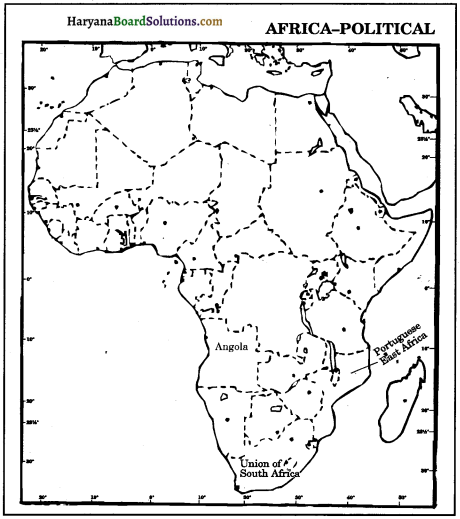
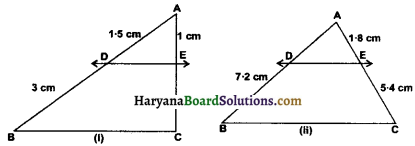
![]()
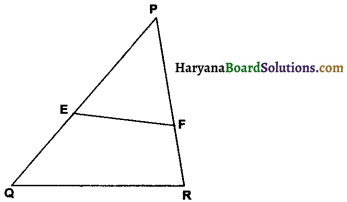


![]()
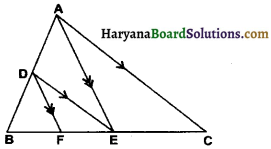
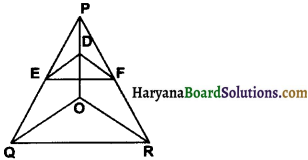
![]()
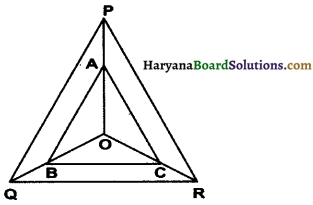
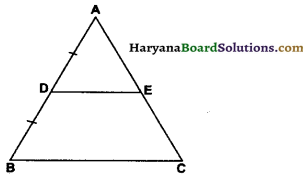
![]()
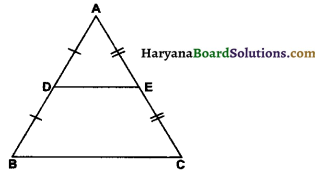
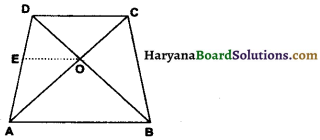
![]()
